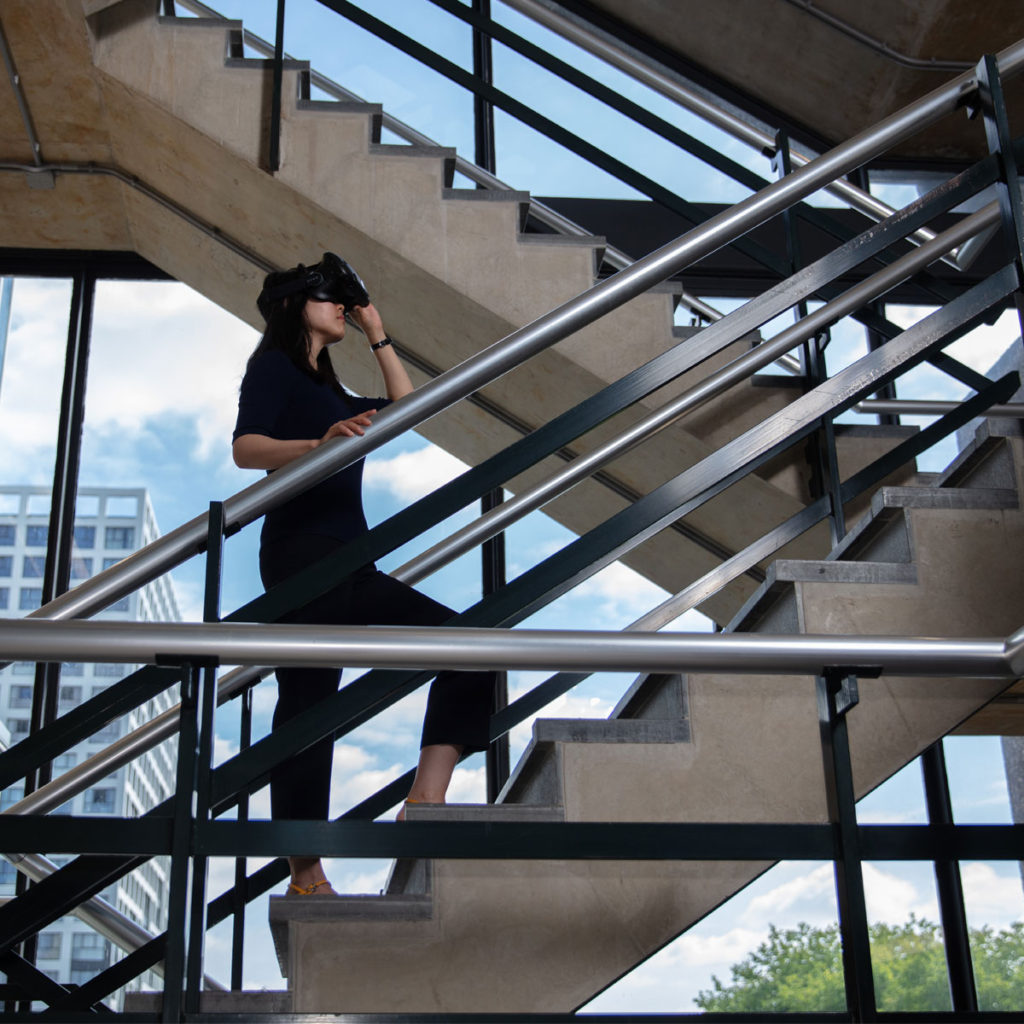Using VR to study pedestrian behaviour | Yan Feng
Project description: Using VR to study pedestrian behaviour
Virtual Reality has gained increasing attention in pedestrian behaviour field in recent years. It offers the possibility of collecting new types of pedestrian behaviour data due to their special features (e.g. high experimental control, minimal ethical concerns). Yet, it is currently unclear to what extent Virtual Reality can be used to provide valid insights featuring pedestrian behaviour.
Two projects have been going on to investigate whether researchers can use VR to study pedestrian evacuation behaviour and wayfinding behaviour in complex buildings. It helps clarify the contemporary technical and methodological challenges and indicates the potential contribution of new technologies for pedestrian research.
Project 1: Using VR to study pedestrian exit choice behaviour during evacuations
A VR experiment and a field experiment were conducted to study pedestrian exit choice behaviour during evacuations. The results established the validity of the use of VR as a research tool to study pedestrian exit choice behaviour.
Project 2: Using VR to study pedestrian route and exit choice behaviour in complex buildings
An innovative VR tool that is designed to investigate pedestrian route and exit choice in a multi-story building. It features a multi-level building that is an exact copy of the CEG Faculty of the Delft University of Technology. With this VR tool, it provides substantial benefits for collect pedestrian behavioural data, such as walking trajectory, head movements, gaze points.

